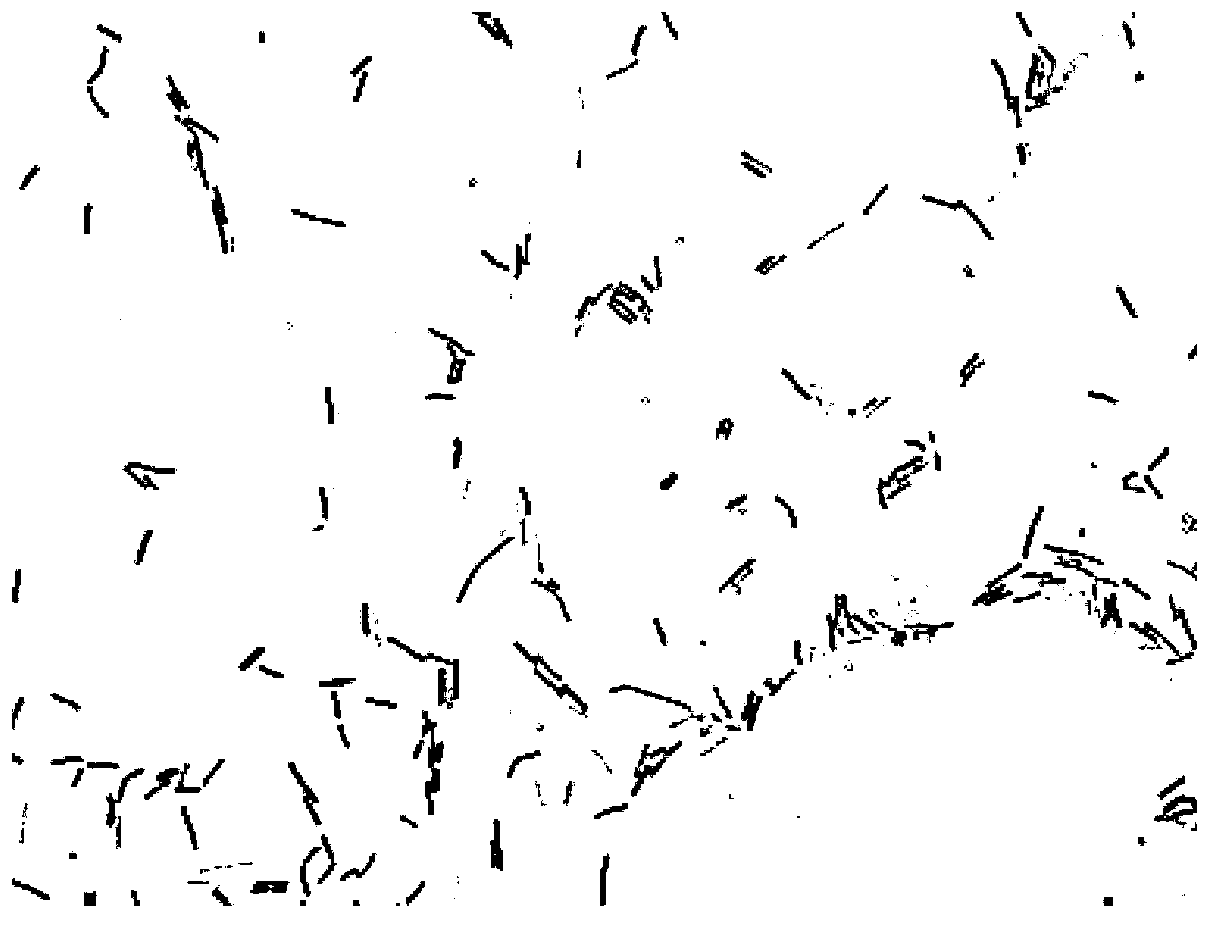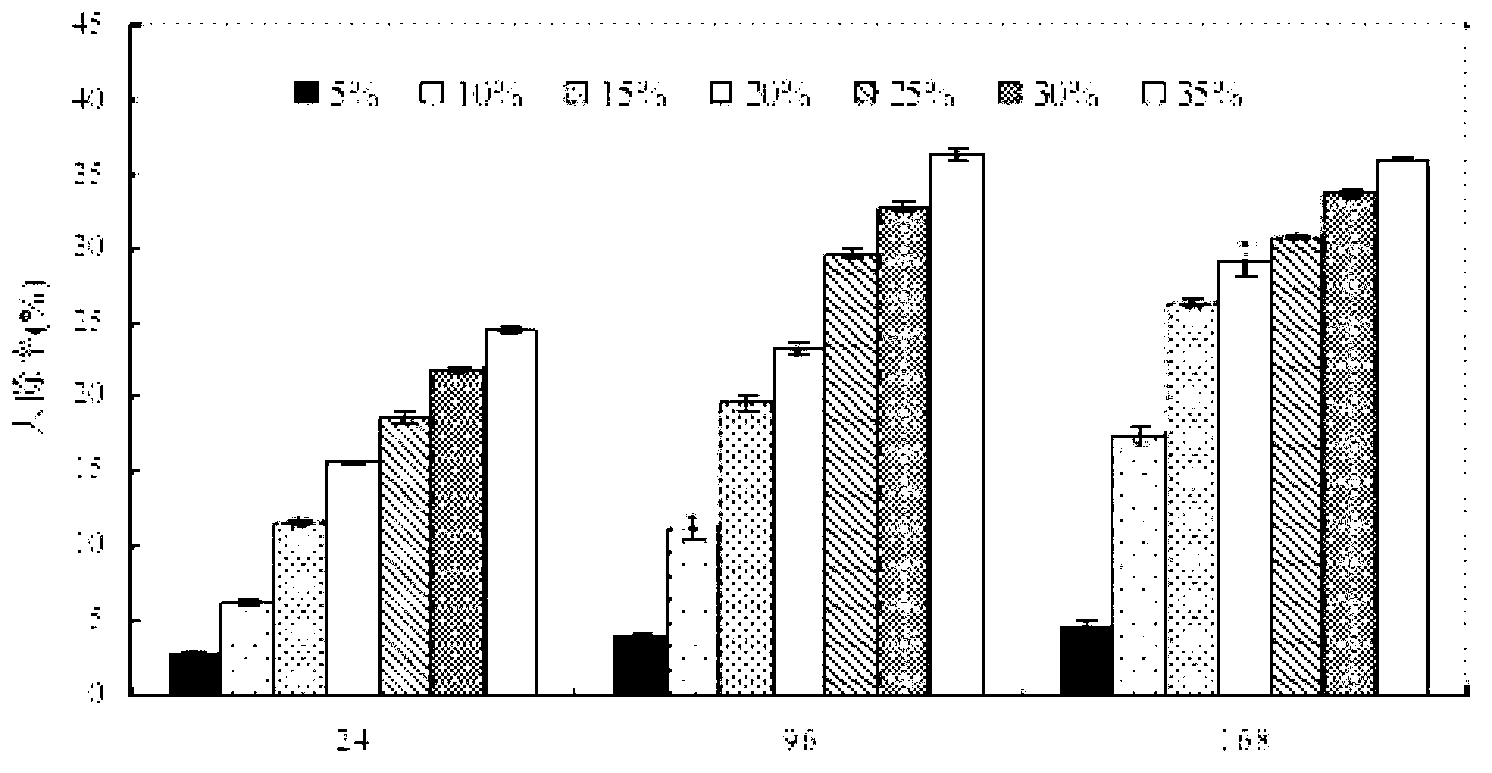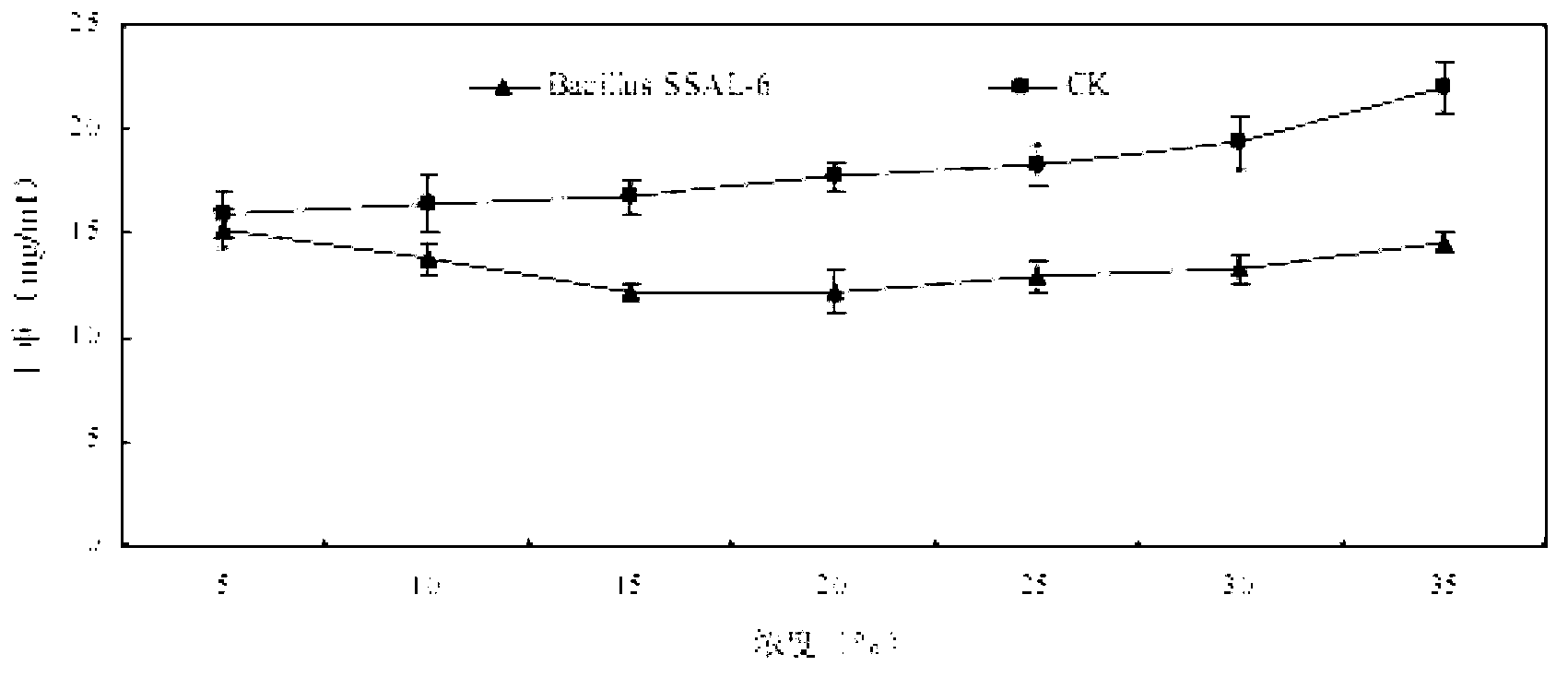Bacillus SSAL-6 and application thereof in degrading anabaena flos-aquae
A technology of blooming Anabaena and Bacillus, applied in the field of microorganisms, can solve problems such as rareness and harm to human beings
- Summary
- Abstract
- Description
- Claims
- Application Information
AI Technical Summary
Problems solved by technology
Method used
Image
Examples
Embodiment 1
[0014] Example 1. Separation, purification and identification of Bacillus SSAL-6
[0015] 1. Isolation and purification of Bacillus SSAL-6
[0016] Taking the yellowed Anabaena algae liquid from the Key Laboratory of Urban Agriculture (South) of the Ministry of Agriculture as the isolation source of algae-lysing bacteria, the 25 strains of bacteria obtained were purified and separated several times by the coating plate method and the partition line method. They were placed in 100 mL LB liquid medium, and the shaking speed was 180 r min. -1 , cultured at 37°C for 24h, and then took 800 μL dropwise and added it to the solid plate of Anabaena algae. The size of the algal plaque was investigated and the algae lytic effect of each bacteria was compared, and finally the strain with higher algae lytic effect was screened out. SSAL-6. It was identified as Bacillus and named Bacillus SSAL-6. It was connected to the slant medium and stored in the refrigerator at 4°C; the bacterial su...
Embodiment 2
[0023] Example 2. The effect of Bacillus SSAL-6 on the growth effect and photosynthetic pigments of Anabaena alba
[0024] 1. The effect of Bacillus SSAL-6 on the growth of Anabaena alba
[0025] Anabaena algae was cultured with reference to the standard method of algal growth inhibition experiment (Ministry of Environmental Protection), using Shuisheng No. 111 nitrogen-free medium, pH 7.5. The culture temperature was 30±2°C, continuous 24h light, and the light intensity was 3000±200lx.
[0026] The concentration of Anabaena in the bloom is 5 x 10 4 ~1×10 5 Bacillus SSAL-6 (the cell concentration is about 10 9 A / mL), the treatment concentration (v / v) gradient is: 5%, 10%, 15%, 20%, 25%, 30% and 35%, and each group of samples has three replicates. A series of culture solutions with different ratios (LB culture solution: Shuisheng No. 111 nitrogen-free culture solution) were prepared as in the experimental group, which were used to cultivate Bacillus SSAL-6 and Anabaena alba...
PUM
 Login to View More
Login to View More Abstract
Description
Claims
Application Information
 Login to View More
Login to View More - R&D
- Intellectual Property
- Life Sciences
- Materials
- Tech Scout
- Unparalleled Data Quality
- Higher Quality Content
- 60% Fewer Hallucinations
Browse by: Latest US Patents, China's latest patents, Technical Efficacy Thesaurus, Application Domain, Technology Topic, Popular Technical Reports.
© 2025 PatSnap. All rights reserved.Legal|Privacy policy|Modern Slavery Act Transparency Statement|Sitemap|About US| Contact US: help@patsnap.com



